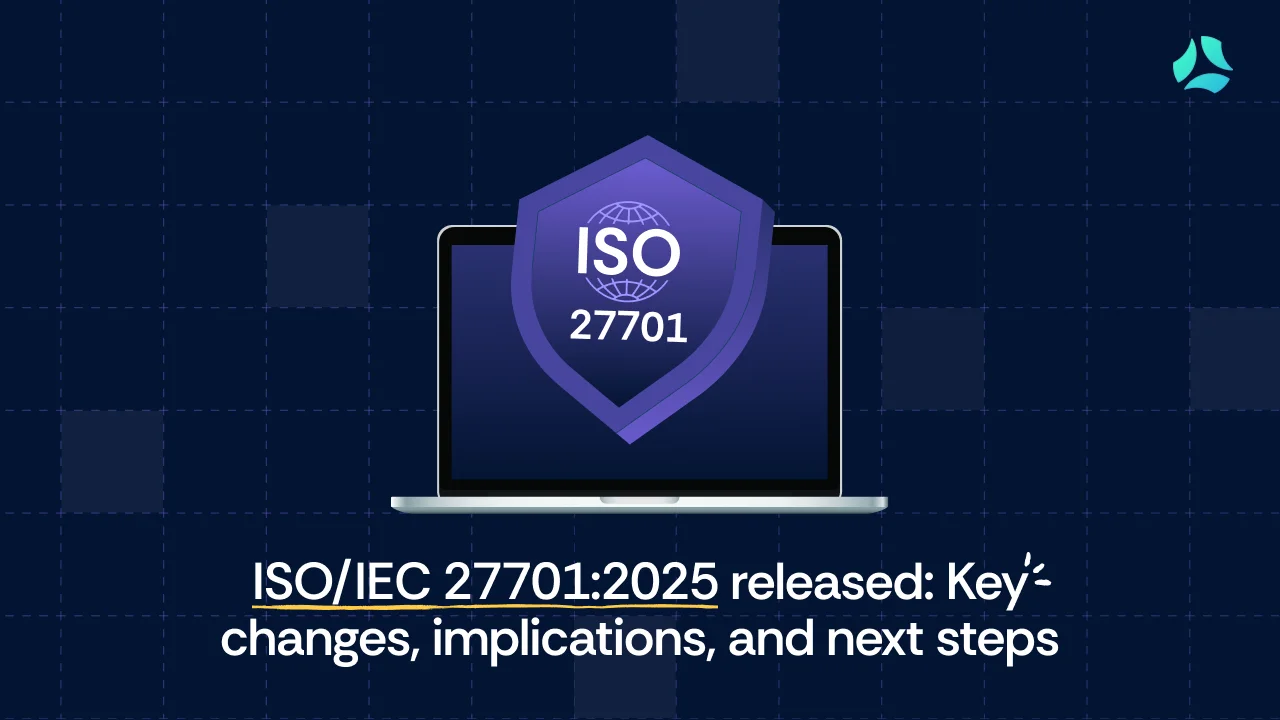Vulnerability Management vs Attack Surface Management
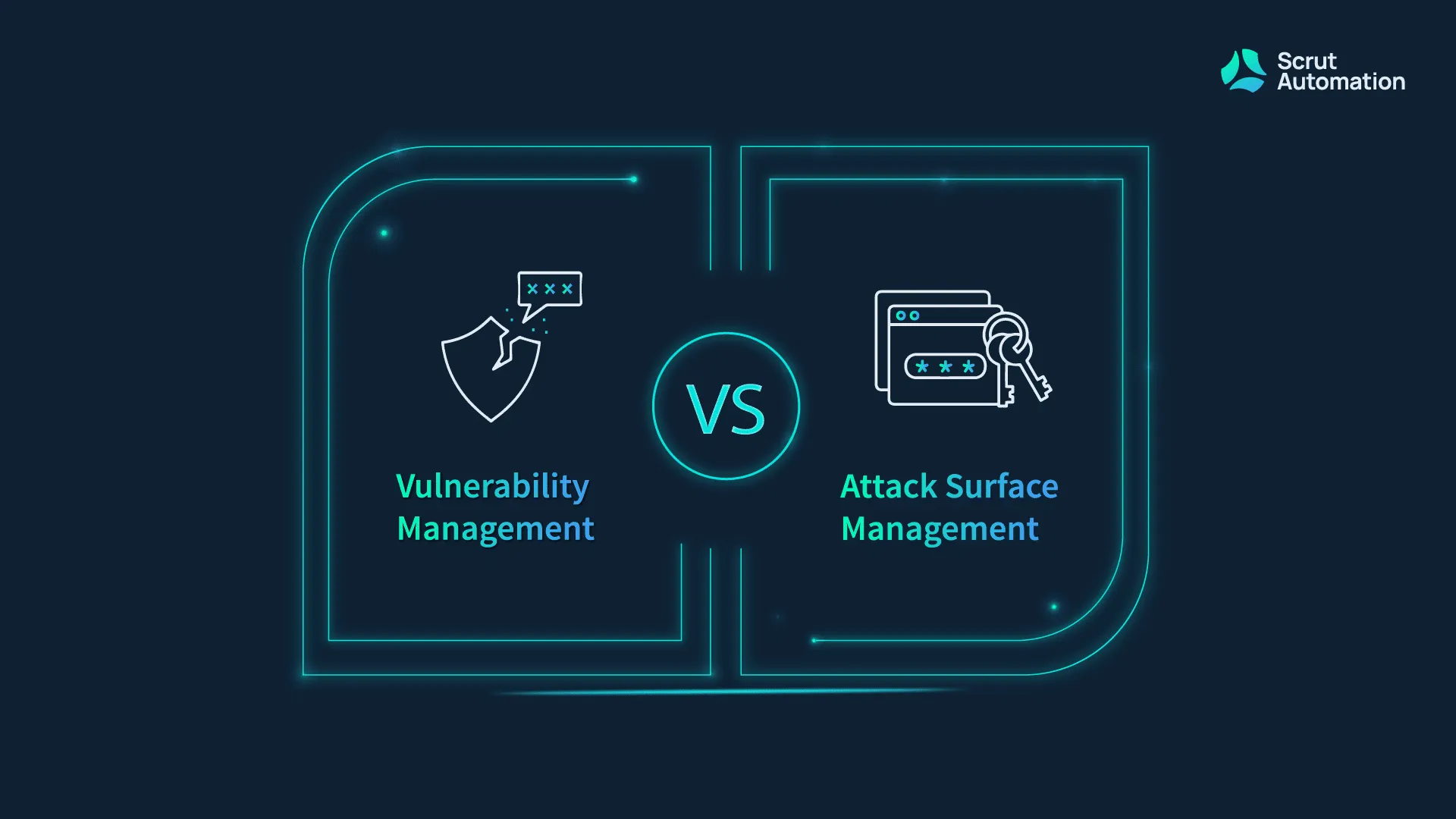
With the rise of digitization, organizations are rapidly shifting towards cloud-based software, SaaS applications, and remote working.
This massive shift is now forcing organizations to change how they approach the security of their cyber assets and overall risk management.
That’s because any cyber asset in an organization, whether it’s cloud-based or otherwise, is a potential entry point for a cyber attack.
Moreover, since organizations are adopting new cyber assets rapidly, it has broadened the attack surfaces significantly.
As a result, it has now become more difficult for organizations to prepare for and manage rising cyber threats in their environment.
In order to strengthen cybersecurity, organizations must adopt a reliable Cyber Asset Attack Surface Management solution.
More importantly, organizations must understand the difference between vulnerability management and attack surface management and figure out how to implement both correctly.
In this post, we have explained what is vulnerability management & attack surface management, the key differences between the two approaches, and which is better for organizations in 2023.
What is a Vulnerability?
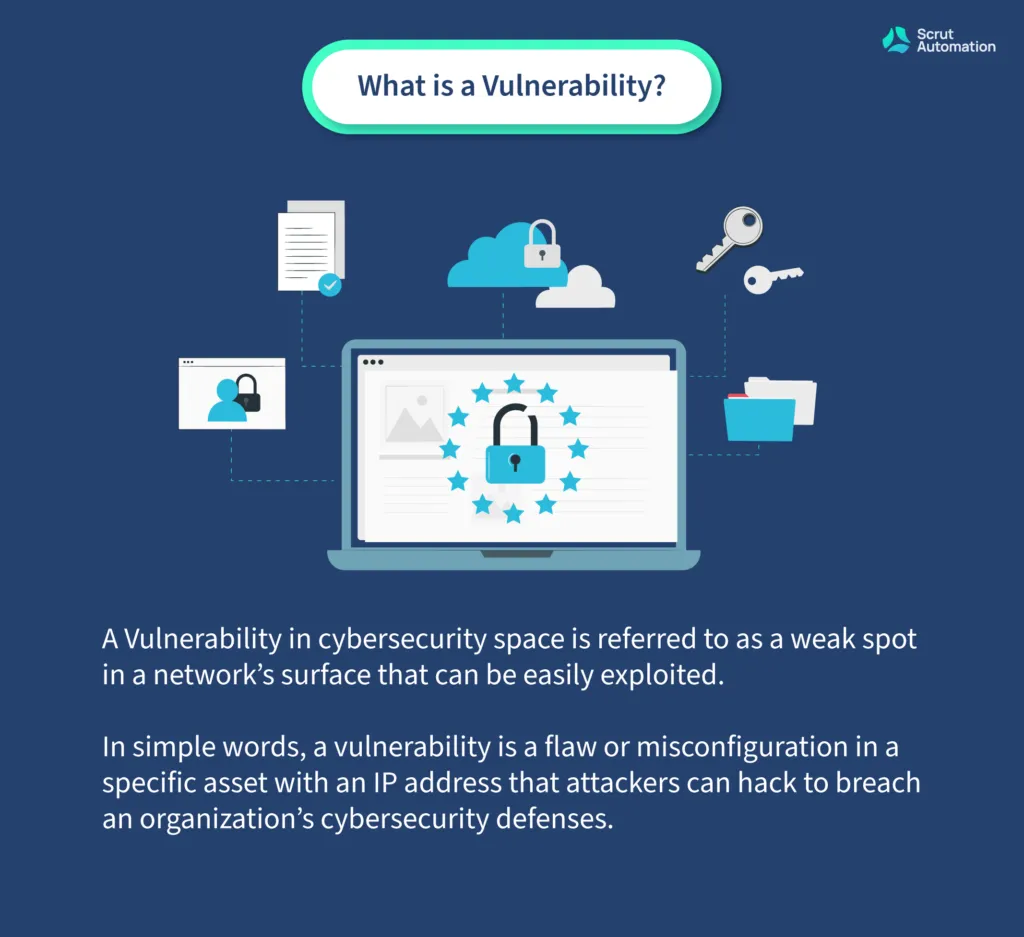
A Vulnerability in cybersecurity space is referred to as a weak spot in a network’s surface that can be easily exploited.
In simple words, a vulnerability is a flaw or misconfiguration in a specific asset with an IP address that attackers can hack to breach an organization’s cybersecurity defenses.
Some of the most common examples of vulnerabilities include —
- System or cloud misconfigurations
- Weak or leaked user credentials
- Unencrypted data or information
- Outdated applications or software
If any of these vulnerabilities get exploited, it could allow an attacker to gain unauthorized access to customers’ sensitive data and jeopardize their confidentiality & integrity.
What is Vulnerability Management?
Vulnerability management is a cybersecurity practice that helps organizations discover and categorize vulnerabilities and attack points in their network devices, systems, applications, and other assets.
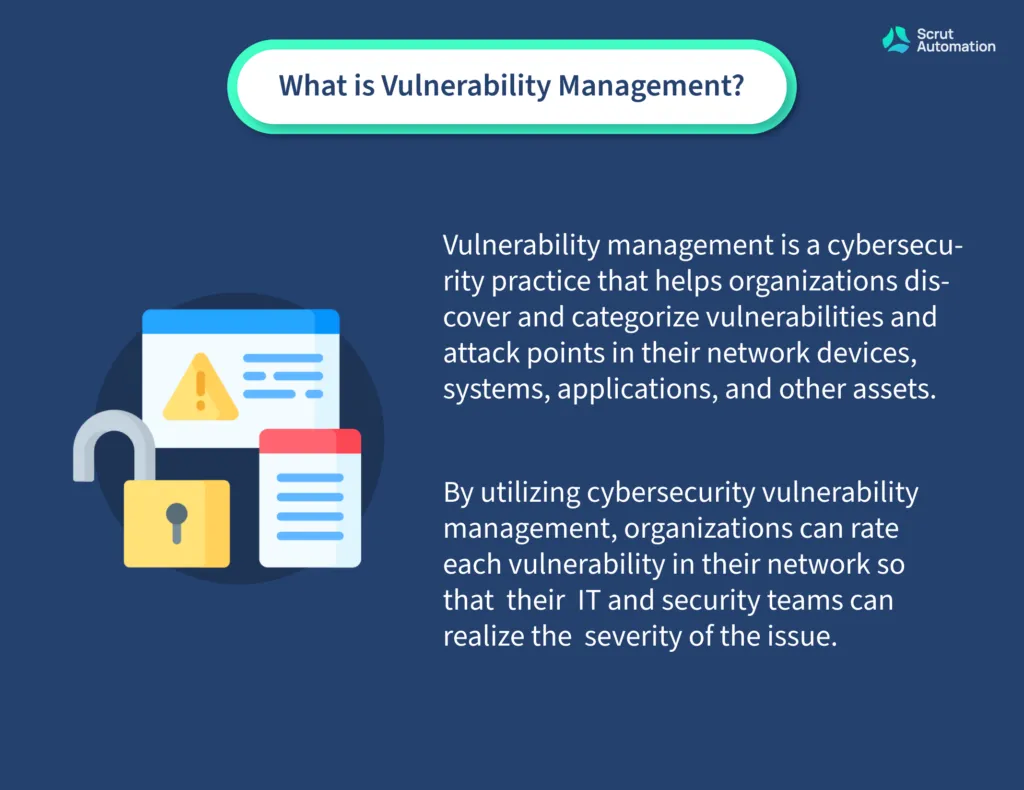
By utilizing cybersecurity vulnerability management, organizations can rate each vulnerability in their network so that their IT and security teams can realize the severity of the issue.
Compared to ASM, vulnerability management mainly focuses on internal cyber assets that may pose a potential risk to an organization. It doesn’t take into account how each potential threat connects to the other assets or the rest of the organization’s network.
In other words, cybersecurity vulnerability management neither communicates nor emphasizes the importance of solving an issue to the extent that attack surface management does.
What is Attack Surface?
The term “attack surface” refers to the collection of all potential attack entry points which could be easily exploited in case of a cyber attack.
The cyber security attack surface generally includes physical (hardware), digital (software), cloud-based, and internet-facing cyber assets in which sensitive data is usually either stored or processed.
Any organization’s attack surface can change dynamically depending on the addition of new cyber assets and the retirement of existing ones.
This is why every organization must monitor fluctuations in their cyber security attack surface continuously to keep their sensitive data intact & protected and prevent cyber attacks.
What is Attack Surface Management?
Attack surface management (ASM) is a modern cybersecurity approach in which organizations leverage various cybersecurity tools for continuous cyber asset discovery, identification, inventory, classification, monitoring, evaluation, prioritization, and remediation of potential attack entry points and vulnerabilities across their IT infrastructure.
Attack surface management provides better visibility into an organization’s attack surface by not only focusing on internal & external assets but understanding the relationships between them (i.e. how they are connected to each other), and their potential effect on the network in case of a cyber attack.
In short, the Attack Surface Management solution may provide information about cyber assets in your organization’s IT infrastructure. But if you want complete information about every cyber asset, you can only obtain them using a CAASM solution. This is because a CAASM solution can not only take inventory of all cyber assets but can also identify vulnerabilities & misconfigurations in all cyber assets.
Key Differences Between Vulnerability Management & ASM
Now that we have specified what vulnerability & attack surface management means, let’s explore the key differences between the two cybersecurity approaches.
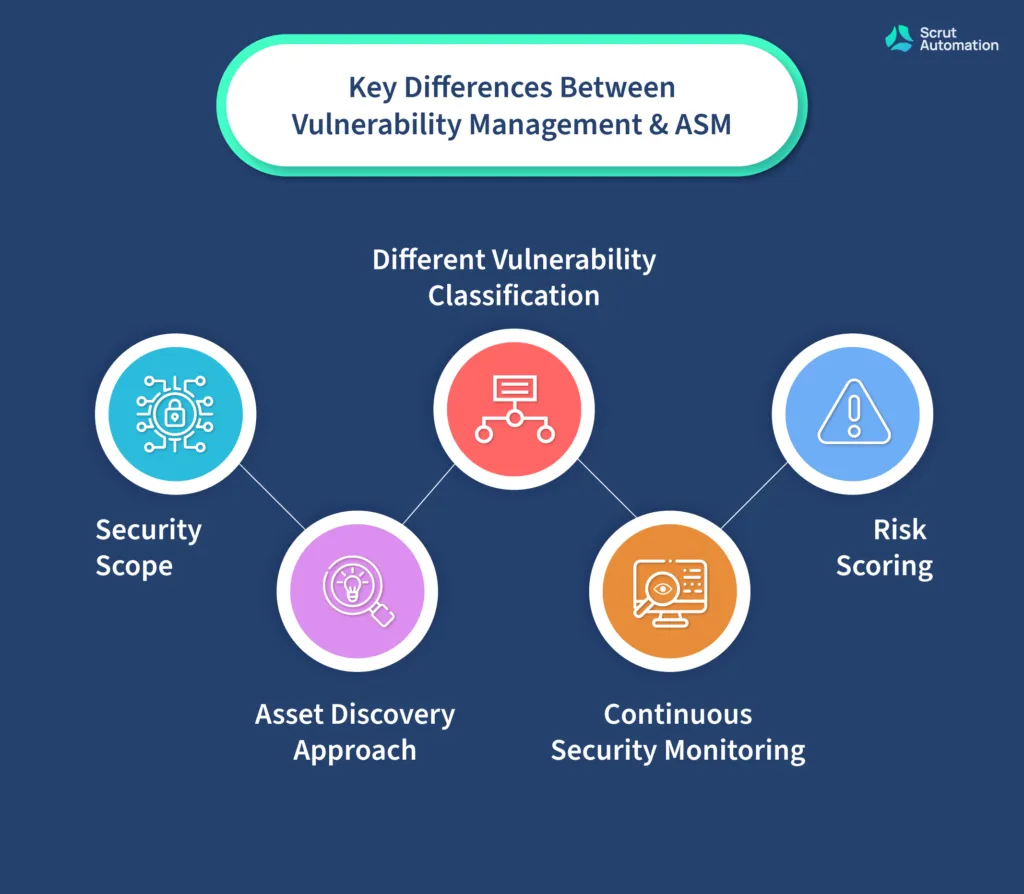
Security Scope
The first key difference between vulnerability management and ASM is the scope of what these two approaches cover in the matter of cybersecurity risks.
For example, let’s assume that you’ve discovered a vulnerability in an exposed web application in your organization’s network. Now, the scope of enterprise vulnerability management covers everything from discovering such types of vulnerabilities to remediating them.
But ASM provides a more holistic view of things to your IT and cybersecurity teams by going beyond basic weaknesses to identify other possible attack vectors across the entire IT infrastructure, apps, devices, and data.
Asset Discovery Approach
The asset discovery approach in vulnerability management and ASM are quite different from one another. In vulnerability management, asset discovery (often regarded as detection) happens by using vulnerability scanners to find known vulnerabilities and pen testing results for difficult vulnerabilities.
In ASM, organizations are required to use a specialized solution to discover and map all their digital assets that pose risks of unauthorized access & intrusion in their IT environment such as code repositories, software, web applications, IoT devices, and so on.
Additionally, the attack surface discovery must be complete and account for all connections & relationships between different cyber assets.
This is better achieved through the attack surface management approach rather than vulnerability management.
Different Vulnerability Classification
Classifying vulnerabilities is an important stage in vulnerability management. It is equivalent to the classification stage in attack surface management. But compared to firmware vulnerability management, ASM goes more granular with its vulnerability classification process.
To elaborate, vulnerabilities in vulnerability management are generally classified according to types such as software, hardware, firmware, or root causes.
In ASM, the vulnerability classification process is done through a granular inventory that labels all cyber assets based on various different properties like owners, technical details, business importance, and compliance requirements.
Continuous Security Monitoring
IT vulnerability management does not have a continuous attack surface security monitoring process. Organizations leveraging vulnerability management often manage vulnerabilities on an ad hoc basis at best.
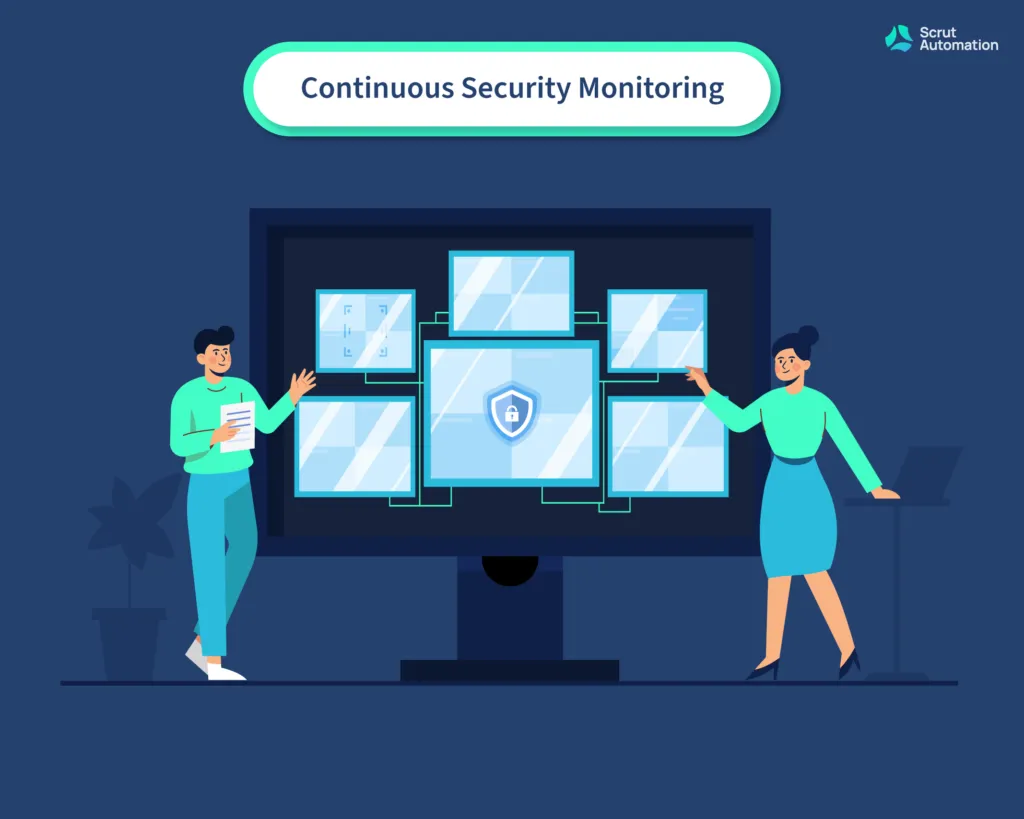
This is even when the Center for Internet Security specifically recommends using continuous IT vulnerability management as a standard practice.
Unlike vulnerability management, ASM has a built-in ability to continuously monitor an organization’s cyber assets for threats and vulnerabilities.
This continuous monitoring approach is essential, especially given the dynamic nature of attack surfaces and the need for visibility across all cyber assets.
Risk Scoring
In vulnerability management, the assessment stage usually involves prioritizing vulnerabilities for remediation based on their risks.
Without prioritization, the IT & security teams end up spending their valuable time resolving vulnerabilities with low risk or stand a minimal chance of being exploited by hackers, while more critical vulnerabilities remain unfixed and pose a greater threat.
Attack surface management, on the other hand, has a risk-scoring step that considers the fluctuating risks posed by different cyber assets in an organization’s environment.
For example, an organization might have thousands of cyber assets making up its attack surface. But irrespective of an organization’s resources, managing the attack surface must prioritize cyber assets based on the severity of risks they pose to the organization.
In simple words, ASM scores vulnerabilities based on their severity by following a standard called Common Vulnerability Scoring System (CVSS). The ASM factors CVSS into the risk scoring equation along with a few others such as asset discovery, the business purpose of each cyber asset, and the potential for damage in case the cyber asset gets compromised.
Vulnerability Management vs ASM — Which is Better?
Figuring out which approach is better between vulnerability management and attack surface management is not complicated. The answer lies in identifying what your organization needs.
A good way to decide is by checking if your organization is subject to regulatory requirements.
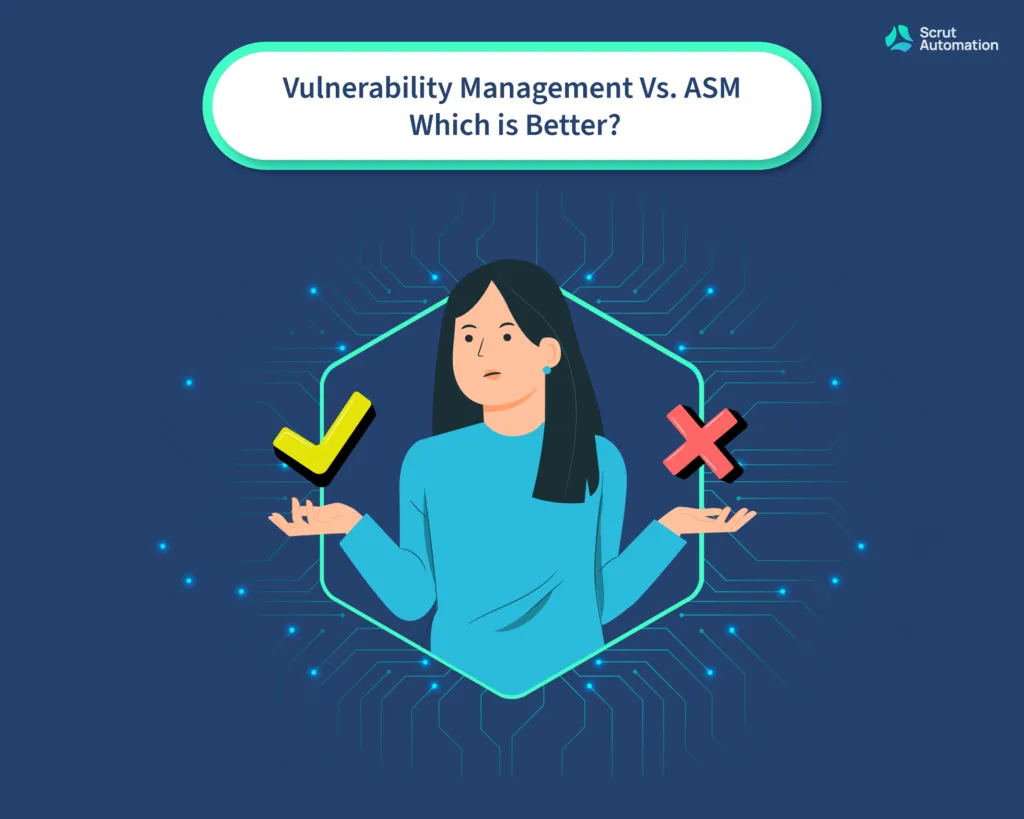
Sometimes, utilizing both vulnerability management and ASM can be mandatory and even required by law.
This is because the main purpose of vulnerability management and ASM is to build a strong security posture that can manage as well as mitigate any kind of cybersecurity threats and risks.
But when we compare both approaches, ASM provides greater attack surface coverage and gives a holistic view of the internet-facing cyber assets of an organization, which helps to build a comprehensive cyber risk management network.
Vulnerability management, on the other hand, is incapable of detecting third-party vulnerabilities. However, it does offer a laser-focused approach to detecting as well as resolving cybersecurity vulnerabilities.
So while organizations can decide to use either one based on their individual cybersecurity requirements, it’s recommended to use both in unison to develop a truly robust & complete cybersecurity program.
How can Scrut Automation Help with Attack Surface Management?
It’s critical to leave no stone unturned when it comes to protecting your organization & all its assets from cyber threats.
Complete CAASM solutions like Scrut can help to detect vulnerabilities instantly that are affecting your organization & its vendors with real-time risk scoring to give complete visibility over cyber assets and the entire attack surface.
Scrut’s CAASM solution provides context to vulnerability findings so that your IT and security teams can quickly & easily assess the blast radius of compromise and examine the severity of an incident to create more accurate threat models to prevent similar incidents from occurring again.
Furthermore, as your IT infrastructure and business processes grow & evolve, Scrut will instantly identify and address all cybersecurity gaps.
FAQs
What is vulnerability management?
Vulnerability management is a continuous process of discovering, assessing, managing, reporting, and remediating vulnerabilities across an organization’s environment.
Why vulnerability management is important?
Vulnerability management is important because it prevents unauthorized access and data exploitation by enhancing the overall cybersecurity posture of an organization.
What is risk-based vulnerability management?
Risk-based vulnerability is a special approach that prioritizes remediation based on the severity of the risks they pose to an organization.
What are the main elements of a vulnerability management process?
There are four main elements of a vulnerability management process. These elements are identification, prioritization, remediation, and reporting.
What is a vulnerability management tool?
A vulnerability management tool is software that is built to identify, prioritize, and remediate cybersecurity vulnerabilities in an organization’s IT infrastructure.
What is CVE in vulnerability management?
CVE in vulnerability management stands for Common Vulnerabilities and Exposures. It is a glossary that analyzes and classifies vulnerabilities. Afterwards, the CVSS (Common Vulnerability Scoring System) is used to evaluate the severity of a vulnerability.
What is the difference between patch management and vulnerability management?
The key difference between patch management and vulnerability management is that patch management is the operational process of implementing patches (remediations), while vulnerability management is a process of scanning, identifying, prioritizing, and reporting vulnerabilities for remediation.
What is a threat in vulnerability management?
A threat in vulnerability management is a malicious event or circumstance that has the potential to adversely affect an organization’s operations, assets, and sensitive information through unauthorized access.




